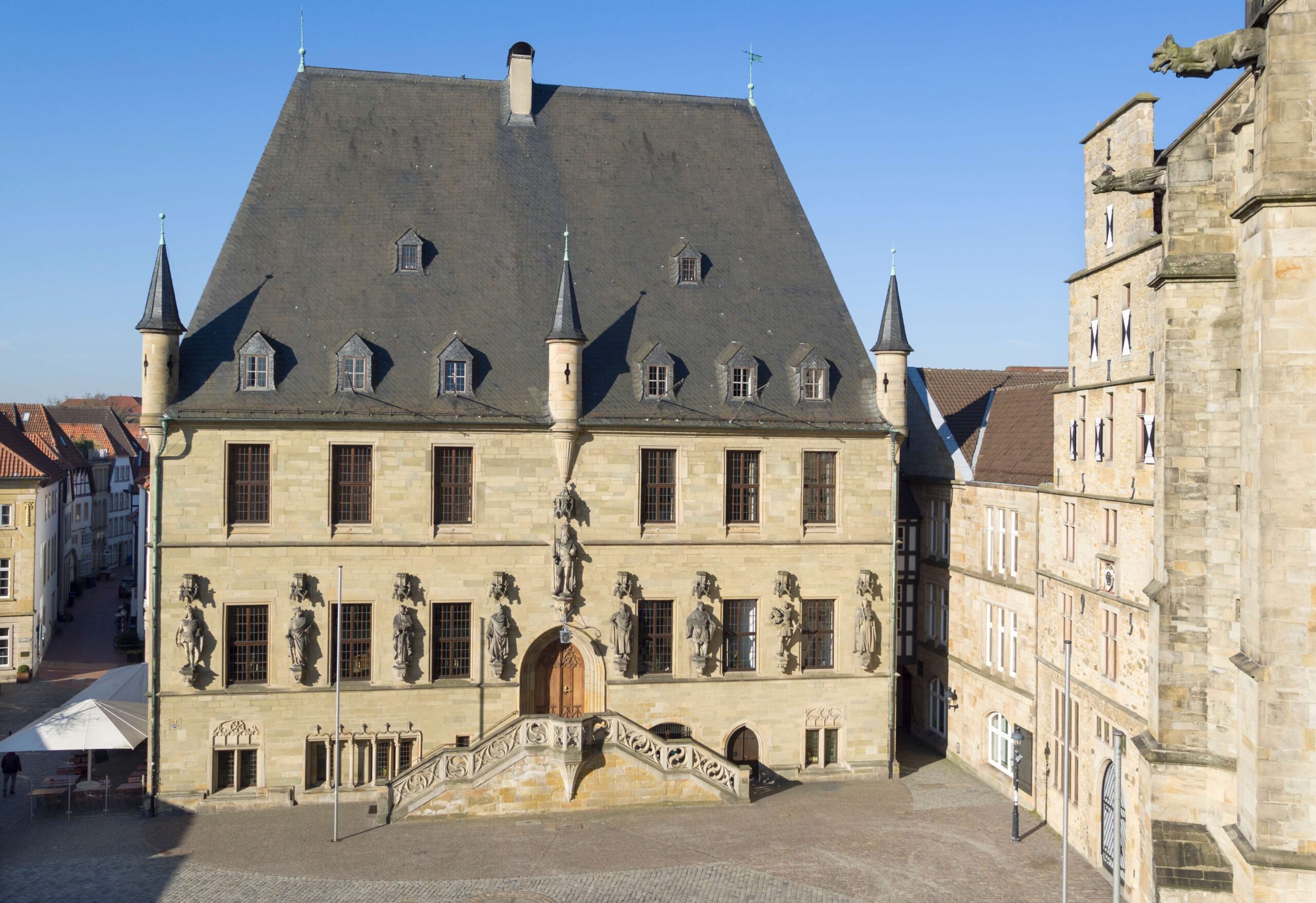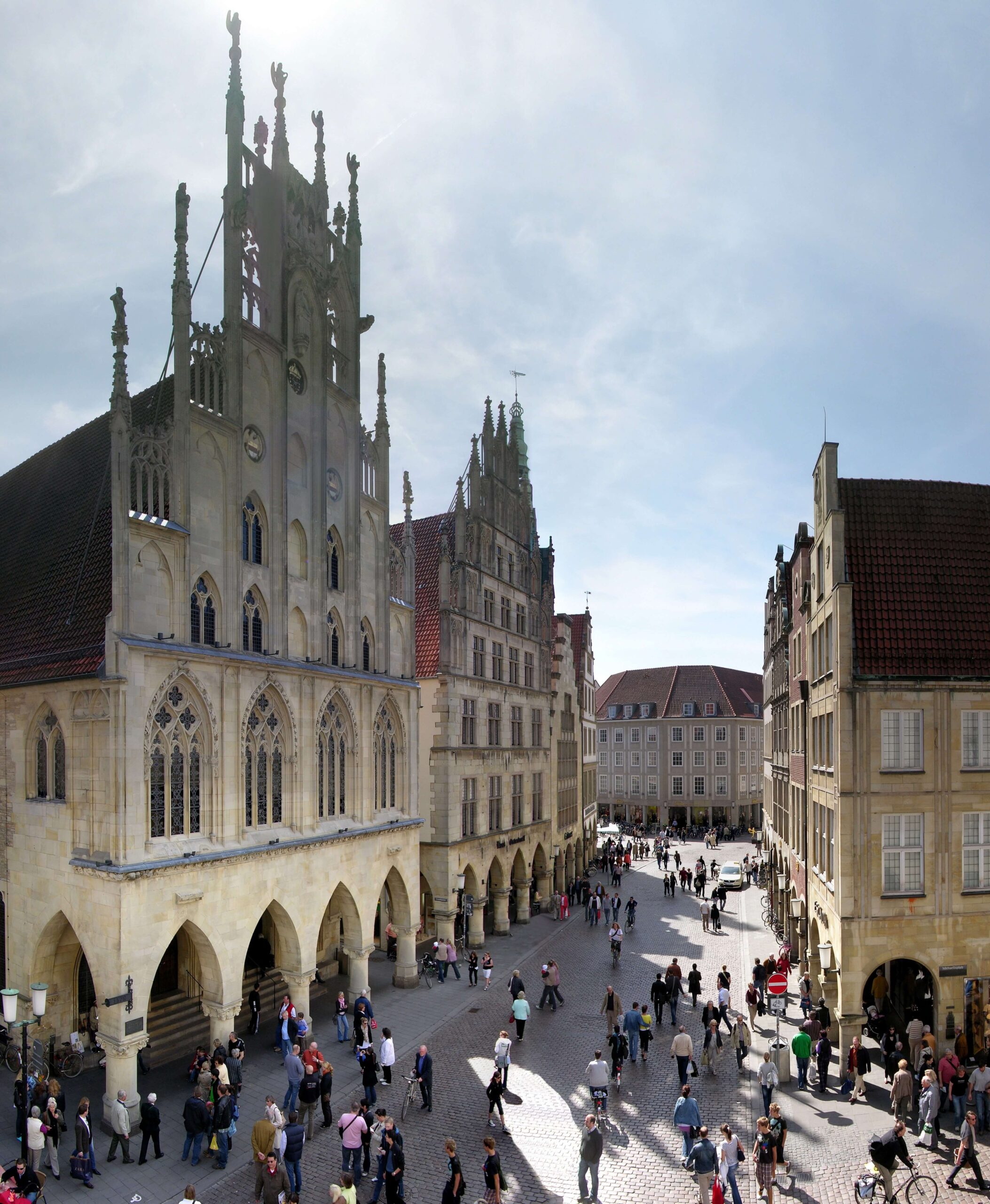This website uses cookies so that we can provide you with the best user experience possible. Cookie information is stored in your browser and performs functions such as recognising you when you return to our website and helping our team to understand which sections of the website you find most interesting and useful.
Münster and Osnabrück – Sites of the Peace of Westphalia


The EHL Site
I The city halls of the German cities Münster and Osnabrück were honoured with the EHL for their importance as the sites symbolize the negotiations between 1643 and 1648, which resulted in the peace treaties known as the Peace of Westphalia. The peace treaties were reached between May 15th and October 24th, 1648, thereby ending the Thirty Years’ War in Germany and at the same time the Eighty Years’ War of Independence of the Netherlands. It also marked the recognition of Switzerland as a sovereign state.
Thus, standing witness to a historical event of outstanding importance for the history and culture of Europe: the ending of a devastating war through diplomatic negotiations rather than military force.
European dimension
The Peace of Westphalia is a ‘confessional peace’, a German ‘constitutional peace’, as well as an European ‘peace of states’. It marked the end of the age of confessional wars in Central Europe and set the stage for religious tolerance that affected all of Europe. The Peace of Westphalia, through the reorganization of territorial structures, laid the foundation for international law and modern political principles such as sovereign states independent of their power and size. Even today, political science, especially the realist school (Henry Kissinger), therefore speaks of the “Westphalian System”. The guarantees of the great European powers allowed for the stable development of Europe. The Peace of Westphalia, even up to the end of the 18th century, was referenced during negotiations of various subsequent peace treaties.
The organization
The city halls in both Münster and Osnabrück are the central landmarks for urban life as well as tourist centers in their respected cities. As sites of the Peace of Westphalia, they are firmly anchored in the consciousness of both the residents and visitors. The city halls also symbolize the mission to keep the tradition as cities of the Peace of Westphalia alive and to transfer the historical legacy into the present and future.
The central motto for both cities relating to peace policy and peace culture work is tolerance/peace through dialog. In Münster, this is also the name of the annual program, which includes academic lectures and, above all, special programs for schoolchildren (this year, for example, under the motto “Geschichte(n)Berichten: Westphalian Peace goes Social Media”). In Osnabrück, the event format Osnabrück Peace Talks in particular stands for this motto. With the Children’s Peace Festival in Münster and the hobbyhorse ride for elementary school in Osnabrück, even the youngest in our societies are involved in peace work. An annual meeting of religious communities from both cities also promotes dialog and tolerance between the different religions.
In addition, there are numerous special events, such as participation in the European Year of Cultural Heritage 2018 or the anniversary year “375 Years of the Peace of Westphalia” in 2023. During the latter, both cities remembered the historical set of peace treaties from 1648. Around 500 events, incorporating the entire urban society from young to old, took place concluding on October 24th and 25th, the historic dates of the signing of the peace treaties in Münster and their proclamation the following day in Osnabrück.
